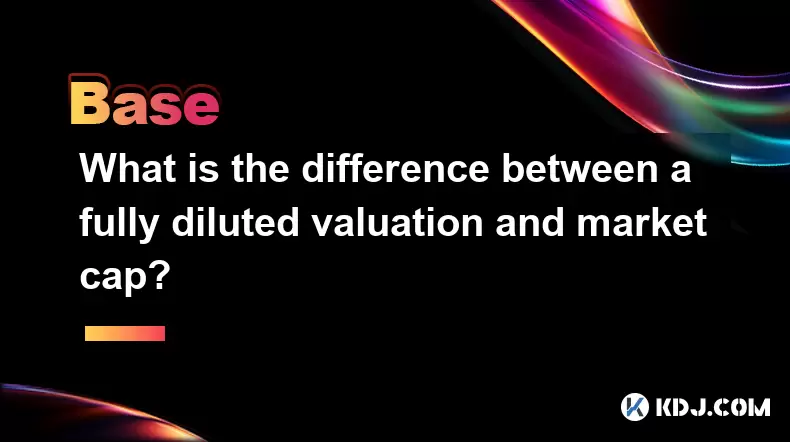-
 Bitcoin
Bitcoin $117400
-0.46% -
 Ethereum
Ethereum $3768
0.60% -
 XRP
XRP $3.551
2.09% -
 Tether USDt
Tether USDt $1.000
0.00% -
 Solana
Solana $203.2
11.30% -
 BNB
BNB $770.9
1.92% -
 USDC
USDC $0.9999
0.01% -
 Dogecoin
Dogecoin $0.2709
-0.02% -
 Cardano
Cardano $0.9024
4.49% -
 TRON
TRON $0.3139
0.60% -
 Hyperliquid
Hyperliquid $45.60
-1.41% -
 Stellar
Stellar $0.4730
-1.34% -
 Sui
Sui $4.025
2.15% -
 Chainlink
Chainlink $19.79
2.19% -
 Hedera
Hedera $0.2724
-2.39% -
 Avalanche
Avalanche $25.93
3.05% -
 Bitcoin Cash
Bitcoin Cash $524.0
-1.83% -
 Shiba Inu
Shiba Inu $0.00001558
0.50% -
 Litecoin
Litecoin $116.7
-0.30% -
 UNUS SED LEO
UNUS SED LEO $8.996
0.00% -
 Toncoin
Toncoin $3.334
1.83% -
 Polkadot
Polkadot $4.506
0.34% -
 Uniswap
Uniswap $10.99
4.83% -
 Ethena USDe
Ethena USDe $1.001
0.03% -
 Pepe
Pepe $0.00001461
3.17% -
 Monero
Monero $320.3
-1.01% -
 Bitget Token
Bitget Token $4.935
0.36% -
 Dai
Dai $0.9998
0.00% -
 Aave
Aave $322.4
-1.25% -
 Bittensor
Bittensor $455.6
9.33%
What is the difference between a fully diluted valuation and market cap?
Market cap reflects current value using circulating supply, while FDV estimates future valuation by including all tokens, offering insight into potential dilution and long-term worth.
Jul 22, 2025 at 10:01 am

Understanding the Basics of Market Cap
In the world of cryptocurrency, market cap is a commonly used metric to assess the size and value of a digital asset. Market capitalization is calculated by multiplying the current price of a cryptocurrency by its circulating supply. This gives investors an idea of the total value of the asset that is currently available in the market.
For example, if a cryptocurrency has a price of $1 and a circulating supply of 10 million coins, its market cap would be $10 million. Circulating supply refers to the number of coins or tokens that are publicly available and can be traded on exchanges. It does not include coins that are locked, reserved, or otherwise not available for trading.
It's important to note that market cap does not account for coins that may be released in the future, such as those held in reserve by the project team or those scheduled for future unlocks.
What Is Fully Diluted Valuation?
Fully diluted valuation (FDV) takes a different approach by considering the total supply of a cryptocurrency rather than just the circulating supply. Total supply includes all coins that have already been issued plus any that are scheduled to be released in the future, such as those from mining rewards, team allocations, or token unlocks.
To calculate FDV, multiply the current price of the cryptocurrency by its total supply. This provides an estimate of what the market capitalization would be if all coins were in circulation today. For example, if a cryptocurrency has a total supply of 20 million coins and a current price of $1, its FDV would be $20 million.
FDV is particularly useful for understanding the potential future valuation of a project, especially for tokens with a long-term emission schedule or significant amounts of locked tokens.
Key Differences Between Market Cap and FDV
While both market cap and fully diluted valuation aim to measure the value of a cryptocurrency, they differ in the supply figures they use. Market cap uses circulating supply, while FDV uses total supply. This distinction can lead to vastly different valuations for the same asset.
For instance, a project with a large number of tokens yet to be released might appear relatively small when viewed through its market cap but could look significantly larger when assessed via FDV. This can be misleading for investors who rely solely on market cap without considering the potential dilution from future token releases.
Understanding both metrics helps investors make more informed decisions by providing a clearer picture of both the current and potential future valuation of a project.
When to Use Market Cap vs. FDV
In practice, market cap is often used for short-term analysis or when assessing the current market sentiment around a cryptocurrency. It reflects the actual value that the market is placing on the tokens that are actively being traded.
On the other hand, FDV is more relevant for long-term analysis or when evaluating projects with a significant portion of their tokens not yet in circulation. It helps investors understand how the market might react if all tokens were released and how the valuation could change over time.
- Investors analyzing new projects with large token reserves might prefer FDV to understand the potential future value.
- Traders focused on immediate price movements may rely more on market cap.
- Projects with tokenomics that include vesting periods or future emissions should consider both metrics.
Using both metrics together provides a more comprehensive view of a cryptocurrency’s valuation.
Practical Examples of Market Cap and FDV
Let’s take a real-world example to illustrate the difference. Suppose there is a new cryptocurrency called “XYZ Coin” with the following parameters:
- Current price: $0.50
- Circulating supply: 10 million coins
- Total supply: 100 million coins
The market cap would be calculated as:
- $0.50 × 10 million = $5 million
The fully diluted valuation would be:
- $0.50 × 100 million = $50 million
This shows that while the current market cap is $5 million, the FDV suggests the project could be valued at $50 million if all tokens were circulating. This wide gap indicates that a large portion of the tokens are not yet available for trading, which could affect future price dynamics.
Such a gap can be a red flag or an opportunity, depending on how the tokenomics and project development align.
Frequently Asked Questions
Q: Can a cryptocurrency’s FDV ever be lower than its market cap?
A: Yes, it’s possible if the total supply is less than the circulating supply due to token burns or other supply reduction mechanisms. In such cases, FDV would reflect a smaller number than market cap.
Q: Why do some projects prefer to highlight FDV instead of market cap?
A: Projects with large future token releases may use FDV to show potential growth or to give a more conservative estimate of valuation. It can also be used to compare projects on a level playing field.
Q: How does circulating supply differ from total supply?
A: Circulating supply refers to the number of tokens currently available for trading, while total supply includes all tokens in existence, including those locked, reserved, or yet to be mined or released.
Q: Should investors always consider both market cap and FDV?
A: Yes, especially when evaluating tokens with complex tokenomics or significant future supply changes. Considering both provides a more accurate picture of the asset’s value.
Disclaimer:info@kdj.com
The information provided is not trading advice. kdj.com does not assume any responsibility for any investments made based on the information provided in this article. Cryptocurrencies are highly volatile and it is highly recommended that you invest with caution after thorough research!
If you believe that the content used on this website infringes your copyright, please contact us immediately (info@kdj.com) and we will delete it promptly.
- XRP, Bitcoin, Ripplecoin: Navigating the Crypto Landscape in 2025
- 2025-07-22 20:30:13
- Cardano Ecosystem Watch: Can PayFi Token Remittix Trigger an ADA Overtake?
- 2025-07-22 20:50:13
- JasmyCoin Price Forecast: Chart Analysis Points to Potential Surge
- 2025-07-22 20:55:13
- Trump, Bitcoin, and Altcoins: A New York Minute on Crypto's Political Play
- 2025-07-22 21:00:13
- Shiba Inu, XRP, and Little Pepe: Navigating the Meme Coin Mania in NYC
- 2025-07-22 21:30:13
- Bitcoin's Role in IntelBroker's Takedown: A New Era of Crypto Crime Enforcement
- 2025-07-22 21:10:15
Related knowledge

What is the difference between CeFi and DeFi?
Jul 22,2025 at 12:28am
Understanding CeFi and DeFiIn the world of cryptocurrency, CeFi (Centralized Finance) and DeFi (Decentralized Finance) represent two distinct financia...

What is the difference between a sidechain and a Layer 2?
Jul 20,2025 at 11:35pm
Understanding the Concept of SidechainsA sidechain is a separate blockchain that runs parallel to the main blockchain, typically the mainnet of a cryp...

What is the Inter-Blockchain Communication Protocol (IBC)?
Jul 19,2025 at 10:43am
Understanding the Inter-Blockchain Communication Protocol (IBC)The Inter-Blockchain Communication Protocol (IBC) is a cross-chain communication protoc...

How does sharding improve scalability?
Jul 20,2025 at 01:21am
Understanding Sharding in BlockchainSharding is a database partitioning technique that is increasingly being adopted in blockchain technology to enhan...

What is the "crypto trilemma" of scalability, security, and decentralization?
Jul 19,2025 at 06:28pm
Understanding the Concept of the Crypto TrilemmaThe crypto trilemma refers to the challenge of simultaneously achieving scalability, security, and dec...

What is a cliff and vesting schedule in tokenomics?
Jul 20,2025 at 10:28am
What Does a Cliff Mean in Tokenomics?In tokenomics, a cliff refers to a specific period during which token holders are not allowed to access or transf...

What is the difference between CeFi and DeFi?
Jul 22,2025 at 12:28am
Understanding CeFi and DeFiIn the world of cryptocurrency, CeFi (Centralized Finance) and DeFi (Decentralized Finance) represent two distinct financia...

What is the difference between a sidechain and a Layer 2?
Jul 20,2025 at 11:35pm
Understanding the Concept of SidechainsA sidechain is a separate blockchain that runs parallel to the main blockchain, typically the mainnet of a cryp...

What is the Inter-Blockchain Communication Protocol (IBC)?
Jul 19,2025 at 10:43am
Understanding the Inter-Blockchain Communication Protocol (IBC)The Inter-Blockchain Communication Protocol (IBC) is a cross-chain communication protoc...

How does sharding improve scalability?
Jul 20,2025 at 01:21am
Understanding Sharding in BlockchainSharding is a database partitioning technique that is increasingly being adopted in blockchain technology to enhan...

What is the "crypto trilemma" of scalability, security, and decentralization?
Jul 19,2025 at 06:28pm
Understanding the Concept of the Crypto TrilemmaThe crypto trilemma refers to the challenge of simultaneously achieving scalability, security, and dec...

What is a cliff and vesting schedule in tokenomics?
Jul 20,2025 at 10:28am
What Does a Cliff Mean in Tokenomics?In tokenomics, a cliff refers to a specific period during which token holders are not allowed to access or transf...
See all articles

























































































